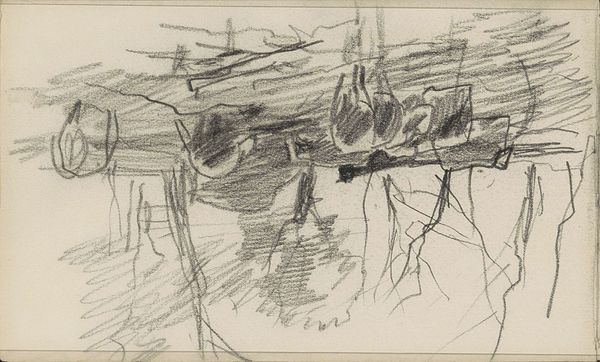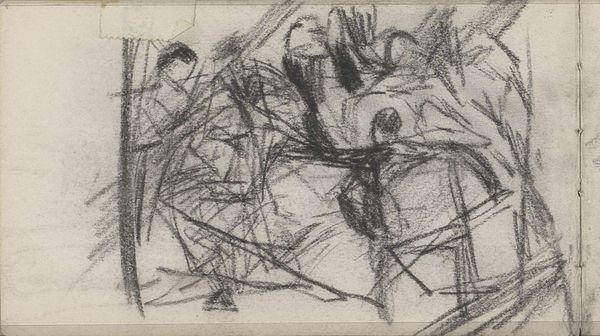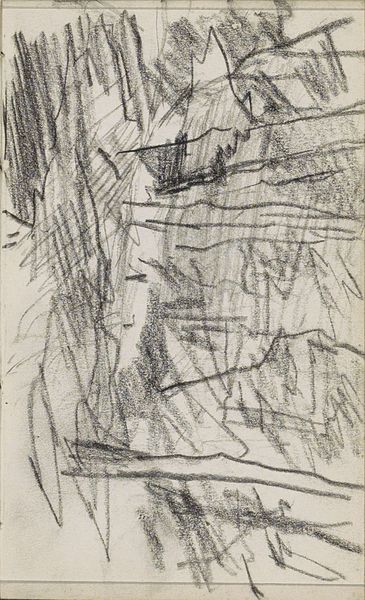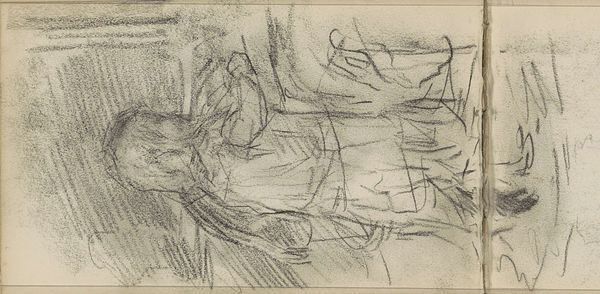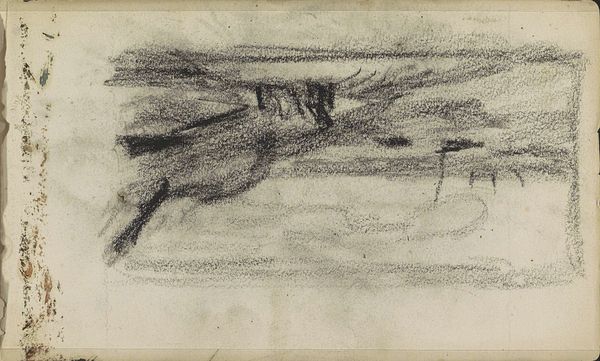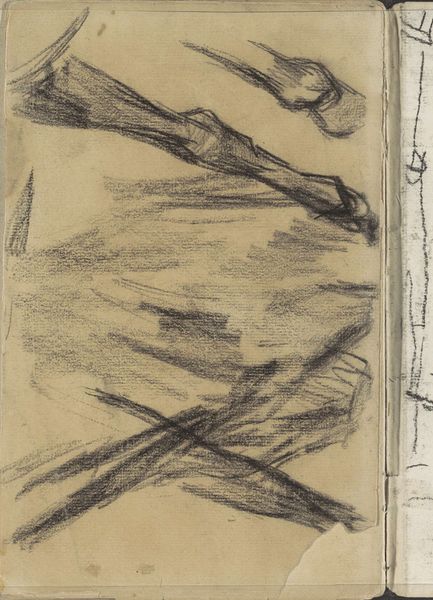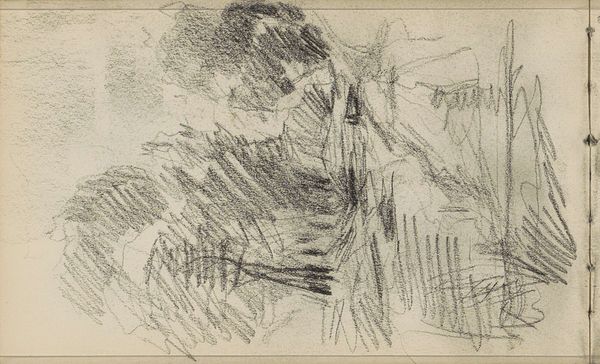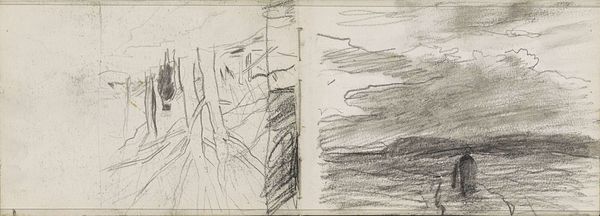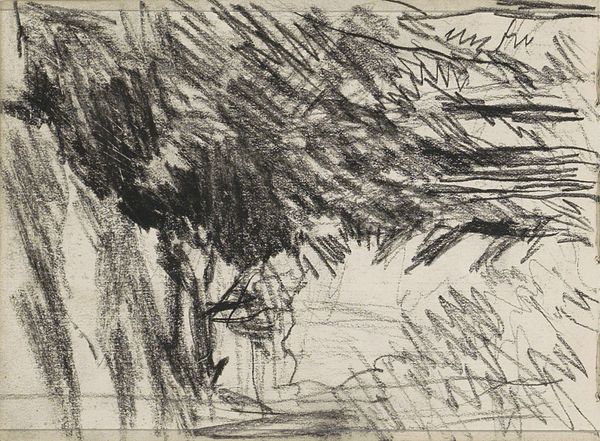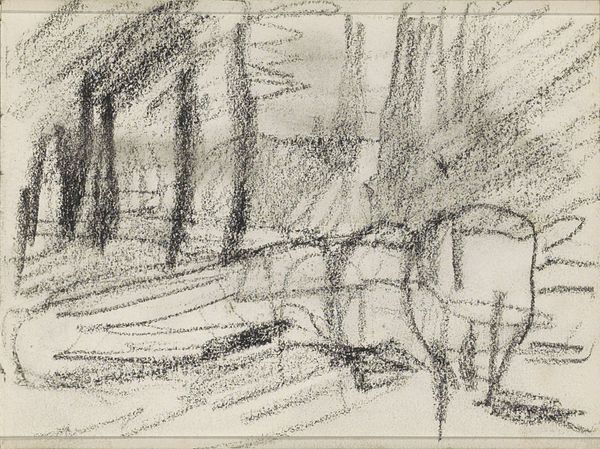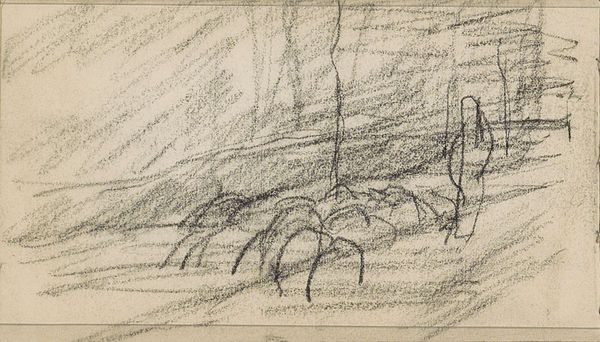
Dimensions: height 180 mm, width 111 mm
Copyright: Rijks Museum: Open Domain
Curator: George Hendrik Breitner created this pencil drawing, “Two Horses and a Rider,” sometime between 1886 and 1923. It’s currently held here at the Rijksmuseum. What are your initial impressions? Editor: Raw energy. It feels like a fleeting glimpse of something wild and untamed. The marks are so immediate, conveying a real sense of motion. Curator: Absolutely. Breitner was deeply interested in capturing the dynamism of urban life, and these horses evoke a sense of transit and perhaps the working-class environment they inhabited. He himself came to be known as the ‘painter of the people.’ Editor: It’s fascinating how these loose, almost chaotic lines, create such a powerful sense of movement. It challenges traditional notions of the artist’s hand, doesn't it? There’s a feeling of immediacy, as though Breitner aimed to translate lived experience without filters, rejecting formal artifice for the honesty of a sketch. Was Breitner at all concerned with the relationship between men and animal labor? Curator: To an extent. Breitner found success capturing working horses that powered Amsterdam in this period. His position reflected broader contemporary dialogues about industrialization and labor and perhaps of animal rights. There's a tension between admiring their strength and acknowledging the exploitation they endured. He was undoubtedly influenced by social realist writers and artists, depicting what they regarded as overlooked communities, contributing a progressive sensibility to art. Editor: His style disrupts classical academic traditions of equine representation and prompts discussion around the socio-economic conditions affecting both the animals and people portrayed. That sketch-like aesthetic lends to broader critiques around access and power at that time, perhaps an understanding of Impressionism, too? Curator: Precisely. This seemingly simple drawing offers complex readings concerning the representation of labor, class, and artistic intention, and underscores the intertwined relationship between humans, animals, and the environment within the city during Breitner’s era. Editor: So it invites us to view social commentary through his rendering of working animals. I will have to examine more about Breitner.
Comments
No comments
Be the first to comment and join the conversation on the ultimate creative platform.
